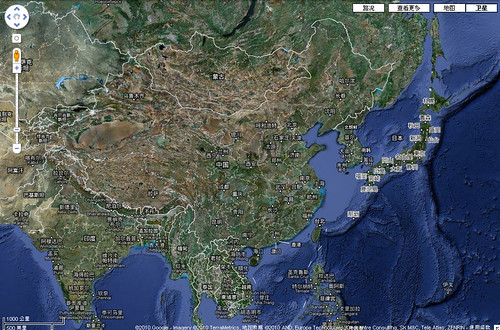今年早些時候,我去中國探亲时, 我向他們展示了谷歌地圖, 包括街道图像。他們很喜欢这个便利,但僅此而 已。他們懶得通过谷歌地圖看來自世界各地的圖像,或使用任何在線地圖導航,幫助他們在不熟悉的地方照路。

Many people there do use maps, particularly when they travel, but most don't. They rely on the experiences to find a new place, and landmarks to locate. If they are to meet someone, the usual place to meet is the place at least one of them knew. Instead of "going straight ahead and turn right on A Street, then turn left on C Street. The number is 2652.", you'll hear "going straight till you see a big yellow building, turn right, then turn left when you see a hospital. The place is the third entrance of the pink building, second floor, the middle door."
那里的許多人实际上使用地圖,特別是當他們旅行时; 但大多數不用地图。他們依靠的經驗以及易认的标记,来找到一個新的地方。如果他們要和他人碰头,通常他们去至少是其中一個知道的地方。你听不到 "一直走,右轉上A街, 然後左轉上C街。號碼是2652。" 你會聽到 "一直走,直到你看到一個大黃楼,右轉,然後看到一個醫院時左轉。這個地方是粉紅楼的第三個入口,二樓,中間門。"
Chinese characters are based on pictogram and people still rely on mostly images to navigate. To design a GPS system for Chinese marketing, better utilize pictures as well.
漢字是建立在象形的基礎上,人們仍然大量依靠圖片定位。為中国設計全球定位系統,应更好地利用圖像。




No comments:
Post a Comment